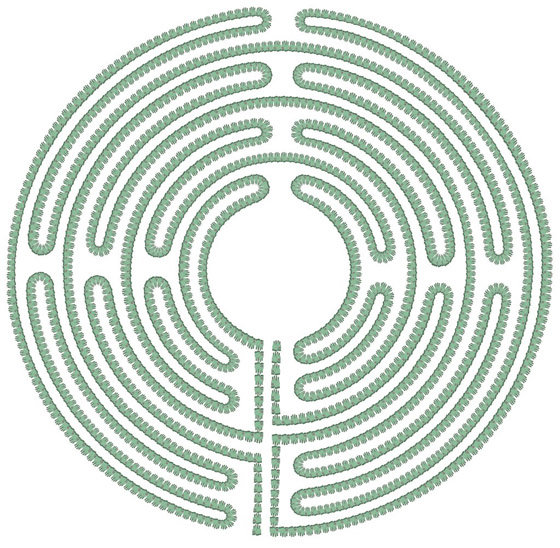Thomas Bayrle - Suse Weber
dal 10/6/2010 al 30/7/2010
Segnalato da
10/6/2010
Thomas Bayrle - Suse Weber
Galerie Barbara Weiss (old location), Berlin
Two solo show

Thomas Bayrle
Alle Kamele sind ein Kamel (Schopenhauer)
A wooden car tire, with the first words of the familiar rosary as its
tread, that begins to rotate like a prayer wheel when touched lightly...
a manipulated Porsche motor, combined with a sound montage (cooperation
with Bernhard Schreiner) that mixes the lush sound of the engine with
the sing-song of a group of women at prayer ... an isolated pair of
windscreen wipers that move like a portent in front of a white wall,
while chanting a scourging "Pray for us" in time to the rhythmic
back-and-forth... a silkscreen that reproduces the labyrinthine
structure of the famous floor mosaic of Chartres Cathedral and
transforms it into a water-bottling machine ...
In this exhibition Thomas Bayrle, who has been occupied with mass
phenomena of all kinds since the 1970s, brings together in a higher
sense the central artistic and intellectual strands of his work. Formal
aspects such as monotony and repetition, consistent constructive
principles -- for example in his well-known collages and silkscreens,
come together in a kind of machine-like parallel circuit encompassing
the themes of religion, mass mobility and economics, which Bayrle has
commented and interpreted in his work for many years now.
"For a long time the 'Western' equivalent to 'Eastern' meditation was
prayer. Its forms range from deep ardour to literary hedging and
quarrelling with God. -- In the semi-darkness of the church old women
say their rosaries. Crowded together on the pews, they murmur like an
eerie stream. They are a humming collective body that -- endlessly,
slowly -- moves bead after bead through its hands. They are working a
great web and they murmur and weave for hours. (I almost forgot)
In the frenzied din of the factory floor -- of the Gutmann weaving mill
in Göppingen -- the murmuring of the women came back to me in the
sing-song of the machines. At a certain frequency, the crankshafts of
the automatic looms sang 'humanly'. Like 2 clutch plates, the songs
approached and joined with one another. So the voices came from within
... the murmuring as bass line melted into a unity with the wailing
metal. So I sing-song through the hours and days -- and could hibernate
for 1 year. -- In the discos too -- or drivin' the car -- this secret
sing-song crept in ... as if the women were embedded deep within the
gearbox and emanating outwards through the vibration. Or as an imbalance
of the tires -- who understand -- that -- OUR FA THER WHO ART IN HEA VEN
is in their tread -- and while they speed -- they pray ... in 300 km ...
1,244,000 times."
Thomas Bayrle, A U T O M E D I T A T I O N, 19.2.1987
(Quoted from: Thomas Bayrle 1967 und 1987, exhibition catalogue
Frankfurter Kunstverein 1987)
----------------
Suse Weber
Tanzschule für eine Marionette
For her second solo exhibition at the Galerie Barbara Weiss, Dance
School for a Marionette, Suse Weber (*1970) -- following her
/FORMEL:KONGORAMA#3/Puppet Theatre/ at the WIELS in Brussels -- has
conceived a stage-like scenario in which she herself appears regularly
at set times.
Taking her lead from the concept of /emblematic sculpture/, as she terms
her three-dimensional works, Suse Weber treats the audience as an
existing factor in the overall scheme along with the sculpture and the
space itself: the audience becomes material. In Weber's configurations
its entrance into the space, the allocation of seating and the
determination of the viewing time reflect a conditioning we also know
from the signs and symbols of the traffic regulations.
In the gallery the viewer is awaited by two rostra of seats and an
approximately two-metre-high MDF figure on wheels, with numerous
plug-and-socket devices. On the walls of the exhibition space hang
folkloristic holders made from punched cardboard, in which Suse Weber
has deposited around 380 coloured visual building blocks according to a
certain order. Their composition features Weber's typical formulas and
references, e.g. to the patterns of Baroque costumes, historical dance
styles or political symbols. This material, which can largely be traced
back to previous works by the artist, and is based on research carried
out at the Leipzig Dance Archive and elsewhere, determines the action in
the Dance School for a Marionette. And the exhibition space itself
becomes a social space through the significances of the visual building
blocks.
When Suse Weber opens the dance school with an acoustic trailer
(cooperation with the Belgian composer Tim Vets) on June 12, she sets
the above scenario in motion according to her choreography. Between June
12 and 30 (every day at 4 pm) 14 marionettes will be created in this way.
In a second exhibition space Suse Weber will work in parallel on a
notation to document the selection and application of the visual
building blocks, and the new choreography of the marionettes each day.
Image: Thomas Bayrle, "San Pellegrino", 2009, silkscreen print on paper, mounted on aluminium
Opening Friday, June 11, 6 - 9 pm
Galerie Barbara Weiss
Zimmerstr. 88-89 - Berlin
Gallery hours Tuesday - Saturday, 11 am - 6 pm
free admission



